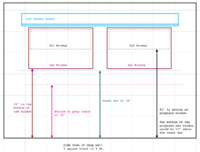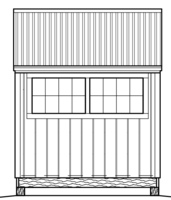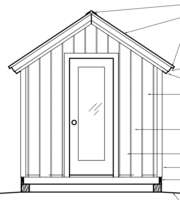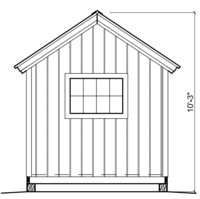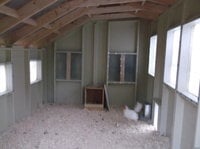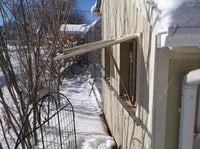Greetings,
This is my first attempt at the inside layout for my 8x8 walk-in coop. I have been reading lots on this site and picking up features that I want to incorporate into my design. This layout is what I currently have in mind. In the attached drawings, the scale is 6" per grid box.
Specifics:
Questions that I have:
Chad
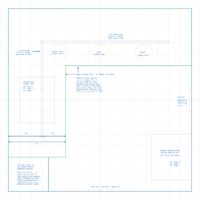
This is my first attempt at the inside layout for my 8x8 walk-in coop. I have been reading lots on this site and picking up features that I want to incorporate into my design. This layout is what I currently have in mind. In the attached drawings, the scale is 6" per grid box.
Specifics:
- I have 8 chicks that will call this place home - 3 Rhode Island Reds, 3 Plymouth Barred Rocks, and 2 Ameraucanas.
- I know that the hypothetical max that an 8x8 could house is 16 birds, but the max that I see myself having is 10-12 (cue laughter here), and that would be down the road. Seriously, though, I'd rather have around 8 or so birds that have extra space than fill the space to the maximum.
- I'm in the PNW, so we get our share of moisture - if that should spur any ideas that affect the inside layout.
- I have power and Cat5e cable run to the build site just because it was so easy to do at the time that I was prepping the location.
Questions that I have:
- Do you see any red flags with this layout?
- I am using a set of greenhouse plans as my basis for the 8'x8' coop. The plans call for a total of 5, 3'x2' windows (2 on each side wall, and one on the back wall). Since I am building from scratch, I could put my ventilation in anywhere, and at any height (as long as it keeps it structurally sound). Given that, where and what size venting would a person put in? The walls are 6 foot high, and with the roof, the coop tops out at about 9' high. I could just build as spec'd and then open and close them as necessary, but since it is going to be a dedicated coop, I thought it might make sense to put in optimal coop ventilation.
Chad








